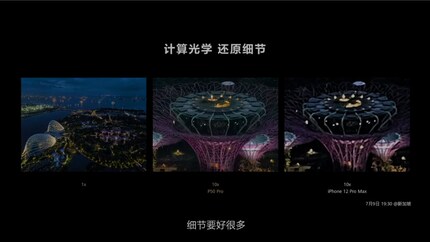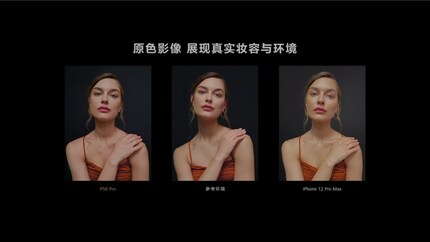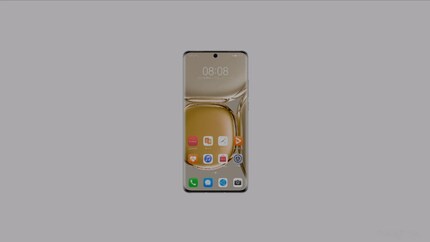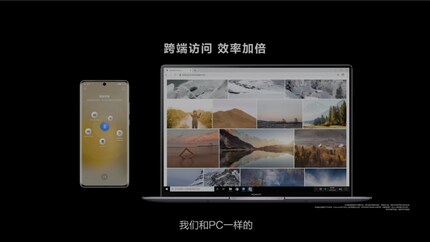
News + Trends
Huawei P50: Huawei with Snapdragon to be released on 29 July?
by Dominik Bärlocher

The Huawei P50 and P50 Pro have become reality. A gigantic camera sensor is powered by specs we already know as well as software we’re still waiting for. And this makes these some of the most exciting devices of the year.
The date was no mystery: 29 July. The time, on the other hand? Undisclosed. And the nature of the presentation? Also undisclosed. In the end, it was a livestream that started at 1 p.m. which presented the Huawei P50 to the world. For now, the phone is only available in China and runs on HarmonyOS 2.0.
The international (and somewhat unstable) livestream was hosted by Richard Yu, CEO of Huawei's Mobile Division. It covered the lineup of upcoming smartphones and included a presentation of HarmonyOS features. The entire presentation was in Chinese with Chinese subtitles.
No details have been announced yet regarding a launch in Switzerland. Unfortunately.
As usual, the «Huawei P50» name doesn’t just refer to a single smartphone. Instead, it’s an entire series. You’ll find the specs of the individual devices listed below, as found on Huawei's official Chinese site. The specs are by and large identical to the leaks published in recent days – emphasis on by and large.
Speaking of large, the P50 Pro is the first phone to have the Sony IMX800 sensor. That’s a one-inch sensor. That’s big. Very big. This means it captures more data than any other camera sensor, which gives the phone system more to work with.
The Huawei P50 Pro is the mid-range phone in the P50 series. There will be two versions of the device, one with Qualcomm Snapdragon, the other with Huawei Kirin 9000. On paper, the Kirin version is more powerful than the Snapdragon version. A charger is not included.
The Huawei P50 Pro will be available in the following colours, though which ones will make it to Europe remains unknown:
On to the camera specs on the Huawei P50 Pro:
The low-end model in the P50 series – simply called the Huawei P50 – also has Leica lenses, which will certainly ensure impressive photos. This model is essentially a downgraded version of the P50 Pro.
Hardware-wise, the cameras aren’t quite as impressive as on its big sister:
The big question is: where’s the Huawei P50 Pro+? There were leaks, after all. The rumour mill was churning. But at the event, Richard Yu said not one word about the Pro+. He did mention 200x zoom at one point, but it doesn’t appear in any of the published specs. The same goes for 5G.
I’m certainly saying alert. Just because nothing was mentioned here doesn’t mean that nothing is coming. My Chinese is a little rusty.
Both the Qualcomm and Kirin models come with HarmonyOS 2. Visually, the operating system resembles Emui, Huawei’s Android user interface – pastel colours, curved lines, icons and widgets.
The focus of HarmonyOS 2, known as «Hongmeng» in China, is not on improving the user interface and its use; it’s on integration with other devices. Huawei relies on an ecosystem, which is supposed to enable Harmony’s harmonisation (pardon the terrible pun). How exactly Harmony interacts with other Huawei devices has so far only been shown in a demonstration, not in an actual live example.
There appears to be an app that shows you all the devices in the ecosystem, your smartphone being in the middle. Let’s say you have a Huawei Sound X speaker. You could simply drag the Sound X icon to the centre of the circle to connect it to your phone.
And that’s really all we got from Richard Yu, who appeared in front of a black background, accompanied by canned clapping. We got to see two separate products.
The P50 series sounds exciting, especially since the phones feature gigantic Sony camera sensors and Leica lenses. Testing the camera will be very exciting, and the pictures will certainly be good. I’m still a huge fan of the camera on the P40 Pro and the Mate 40 Pro. But some questions remain unanswered. What about the P50 Pro+? Does it even exist? And where are the 5G chips? Is the back of the «Rippling Clouds» P50 Pro slightly coarse to the touch?
But what’s really exciting is HarmonyOS. Because – to varying degrees – the big limit of any software currently on the market is integration into an ecosystem. Huawei claims that HarmonyOS was conceived with ecosystems and device boundaries at its very core. So, it’s supposed to bridge them more easily than ever before. I want to see that.
Journalist. Author. Hacker. A storyteller searching for boundaries, secrets and taboos – putting the world to paper. Not because I can but because I can’t not.
From the latest iPhone to the return of 80s fashion. The editorial team will help you make sense of it all.
Show allPixel density: 450 ppi



